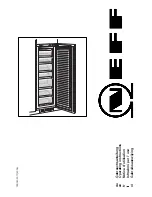
3 Water Care
3 Water Care
W W W . B A L T I M O R E A I R C O I L . E U
9
WATER CARE
About water care
In all cooling equipment, operating in evaporative mode, the cooling is accomplished by evaporating a small portion
of the re-circulating water as it flows through the equipment. When this water evaporates, the impurities originally
present in the water remain. Unless a small amount of water is drained from the system, known as blow down, the
concentration of dissolved solids will increase rapidly and lead to scale formation or corrosion or both. Also, since
water is being lost from the system through evaporation and blow down, this water needs to be replenished.
The total amount of replenishment, known as make-up, is defined as:
Make-up = evaporation loss + blow down
In addition to the impurities present in the make-up water, any airborne impurities or biological matter are carried
into the equipment and drawn into the re-circulating water. Over and above the necessity to blow down a small
quantity of water, a water treatment programme specifically designed to address scale, corrosion and biological
control should be initiated when the system is first installed and maintained on a continuous base thereafter.
Moreover there must be an ongoing programme of monitoring in place to ensure the water treatment system is
maintaining the water quality within the control guidelines.
Check and adjustments of blow down depends on the blow down device actual in use.
To prevent excessive build-up of impurities in the circulating water, a small amount of water must be « bled » from
the system at a rate to be determined by the water treatment regime. The amount of blow down is determined by
the design cycles of concentration for the system. These cycles of concentration depend on the quality of the
make-up water and the design guidelines for the quality of the recirculating water given below.
Make-up water to the evaporative unit should have minimum 30 ppm hardness as CaCO
3
.
Where use of a softener is necessary to achieve this, the supply to the evaporative unit should not be totally
softened, but blended with the incoming unsoftened water to achieve the minimum hardness between 30 and
70 ppm as CaCO
3
.
Maintaining a minimum hardness in the make-up water offsets the corrosive properties of totally softened water
and reduces the reliance on corrosion inhibitors to protect the system.
To control corrosion and scale, the water chemistry of the circulated water has to be kept within the water quality
guidelines of the specific materials of construction used, as listed in the following table(s).
VT0
VT1
3










































